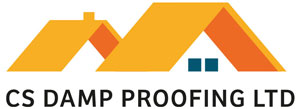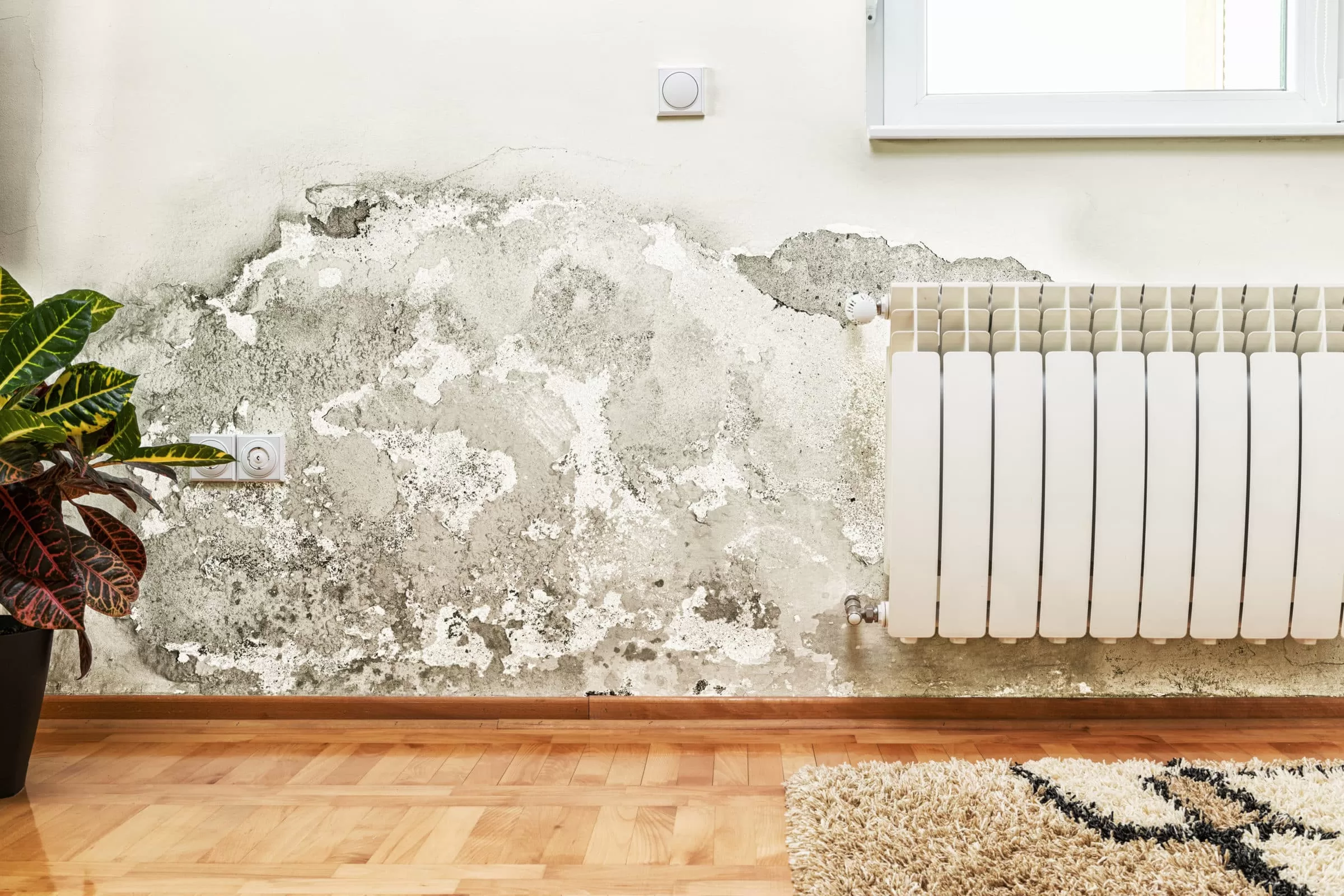Structural damp can cause unwanted or even dangerous damage to a home when it starts penetrating the walls. Not only does it affect the physical appearance of the property because it’s aesthetically displeasing, the moist environment encourages the growth of mould, which can cause severe health problems. Alongside mould, it enables wood rot and corrosion, resulting in the deterioration and likely collapse of structural supports within a home or commercial property.
The best time to eliminate damp is as early as possible, before it has time to do serious damage to your property and cost you more in lost time and expensive repairs. Therefore, it’s important that your home is kept damp-free and damp proof. In this article, we’ll look at how to stop damp coming through walls.
What Type of Damp Is Affecting Your Property?
Damp tends to manifest itself in similar ways, regardless of the type of damp plaguing your property. Generally signs such as mildew, peeling paint, water stains or a foul smell will alert you to the issue, though they won’t necessarily direct you to the source of that issue.
Despite showing similar signs, there are different types of damp. You will most likely come across rising damp, penetrating damp, lateral damp and condensation. The type of damp affecting your property will determine the most effective treatment and preventative measures on how to stop damp coming through walls.
How to Stop Rising Damp Coming Through Walls
Although a less common type of damp, rising damp can spell disaster for a building and should be treated with foremost urgency once it’s been detected. Rising damp occurs when groundwater is absorbed by the building’s foundation and is carried upwards through its walls. The building’s masonry is porous, which means it has small gaps in it. This allows water to spread within the walls by way of capillary action. You will likely become aware of the issue from cosmetic faults such as peeling paint or damp patches. Yet, the reason rising damp can be disastrous is because, upon expert inspection, you’ll also find signs of decaying wood or corroded brick and stone. Having a degraded foundation compromises the building’s structural integrity. In the worst cases there is an increased likelihood of collapse, making the building unsafe to live in or use.
A damp-proof course (DPC) is the most effective barrier against rising damp. It’s a protective, waterproof barrier that stops water from rising through the base of the building. Damp-proof courses can vary but often consist of a simple plastic layer or a more effective chemical membrane. Rising damp tends to affect older buildings that were built without a damp-proof course. However, damp-proof courses can break or degrade over time. Therefore, many new buildings face this problem due to a faulty damp-proof course.
Don’t risk leaving your home defenceless against rising damp. Protect your property with a functional DPC, repaired or installed by a professional.
How to Stop Penetrating Damp Coming Through Walls
When occupants start to notice the effects of damp, such as peeling paint, rotting floorboards or tide marks, they are likely experiencing the effects of penetrating damp. As the name would suggest, penetrating damp occurs where water enters or ‘penetrates’ the interior of the building from the outside.
Penetrating damp can be a result of different factors, often times working together to exacerbate the problem. Leaking water is one of the biggest causes, often due to faulty or overloaded infrastructure. Bad plumbing or leaking pipes can quickly result in dampness within internal walls. Blocked drains and gutters can cause water to flood through the roof or external walls.
Rain is also a common source of penetrating damp. However, this is coupled with a defect in the building such as cracks in the walls, damaged roofing or porous, aging or otherwise deteriorating stonework. These defects allow rainwater to enter your property and cause internal damage, while aggravating external damage.
Unlike rising damp, which primarily affects the base of a building, penetrating damp can affect any part of a building. This can make finding the source very difficult, and fixing the issue all the more critical. The best way to stop damp coming through walls is to address the source of penetrating damp. It’s not possible to stop the rain, however it is possible to identify and fix your home’s building defects or bad plumbing with professional help.
How to Stop Lateral Damp Coming Through Walls
Lateral damp possesses several overlapping qualities with rising damp and penetrating damp. Similar to rising damp, it can stem from groundwater being absorbed by porous building materials and travelling through walls. Alternatively, it can stem from external sources such as broken pipes or rain, as with penetrating damp, and enter through cracks in the wall or openings such as unsealed windows. However, the distinguishing quality of lateral damp is that water enters and travels through walls horizontally. As a result, it is able to spread and affect large sections of a single room.
Lateral damp will exhibit flaking plaster, as well as blistering or bubbling paint. Yet, its more alarming sign is the growth of spores around the room it has affected, which can trigger respiratory problems. In drastic cases, this type of damp can also cause electrical failure, as water penetrates lighting fixtures and electrical sockets.
Because it will be hard to determine the source and extent of lateral damp owing to how it spreads, the best method on how to stop damp coming through walls is a damp-proof course, much like for rising damp. However, if there is any evidence of electrical problems, it’s best to contact an electrician to resolve those issues, before installing or repairing the damp-proof course on your property.
How to Stop Condensation Coming Through Walls
While hard to believe, condensation is also a type of damp. And much like other types of damp, it can wreak havoc on your property if left untreated. Condensation is the change of water vapour to liquid water, due to the lowering of temperature in a room. Unlike rising damp and penetrating damp, the source of condensation is not from external water getting into the building. Instead, condensation is mainly caused by daily human activities such as cooking, bathing or drying clothes inside.
All of these activities increase the humidity indoors, but because the space is enclosed, all of this excess water vapour is trapped. This water vapour then condenses on cool surfaces such as walls, tiles and windowsills, resulting in discolouration and mould on these surfaces. This is especially prevalent in winter, where people spend more time indoors and heaters are in use, increasing humidity. At the same time, windows and doors are closed to avoid the cold, and there is no way for the water vapour to escape.
Because condensation is a natural phenomenon and is the result of normal human activities, it seems that there are no preventative measures. However, nothing could be farther from the truth. The methods on how to stop damp coming through walls, specifically condensation, can be as simple as using lids while cooking or wiping away excess water around the house. While you can’t stop doing activities such as cooking or taking a shower in your home, you can stop drying clothes indoors and start opening windows to release excess water vapour.
Another method to consider in order to reduce condensation is the ventilation in the building. Condensation does the most damage when there is too much of it resting in one place. A solution to this can be a dehumidifier or extraction fans installed in exceptionally humid places like kitchens and bathrooms. Often, it’s enough just to leave the windows open for longer.
Frequently Asked Questions
1. What should I do if I can’t tell what kind of damp I have?
If you suspect that you have damp but can’t identify the source of it or the extent of the damage, the best course of action would be to have a damp survey carried out. An expert will inspect the property and issue a damp and timber report. This report will detail the source and extent of any damp issues, alert you to other issues such as rot or infestation, and provide recommendations on how to address them, along with estimated costs.
2. My home is already damaged from damp. Can I still have a damp-proof course installed?
Yes. In fact, after a history of damp issues, it is recommended to install a damp-proof course or repair an existing one. However, you must repair the structural damage caused by the damp first. Otherwise, you may still have problems with the damage already done, and the damp-proof course may not be as effective. Such repairs will be separate and apart from any treatment method for damp issues and may incur an additional cost.
3. Can I sell my property with damp issues?
Technically, it is legal to sell a property with damp. However, there are several factors to consider, ideally before listing your property for sale. Primarily, you are legally obliged to tell potential buyers about your home’s damp issues, even if those issues are in the past or are not easily noticeable. This will in turn affect how many buyers are interested in your home and how much they are willing to pay for it. Depending on the extent of the issue, the cost of repairs may be factored into the selling price and borne by either the seller or the buyer. It’s advisable to have a damp survey conducted so that you can explain the issue to potential buyers and decide a fair price for the property.
4. Should I buy a property with damp issues?
The seller is required to tell you about the property’s history of damp, following which it is your decision whether or not to purchase. It is recommended to have a damp survey carried out by a professional prior to sale, so that you understand the extent of the damage and can make an informed decision. Nevertheless, you should consider the consequences of buying a house with damp, such as structural safety and health concerns within the building. There is also the additional expense of resolving the damp issues or the damage caused by damp issues, should you choose to address them. This is a factor that can be used as leverage to negotiate the selling price.
5. What types of damp-proof courses are available?
A damp-proof course is a treatment method to protect buildings from excess water, which can cause damp on exterior or interior walls. This is done by creating a waterproof layer between the water and the building itself. There are four types of damp-proof course available, namely chemical damp-proof course, mortar damp-proof course, non-chemical damp-proof course and damp-proof membrane. Each damp-proof course has its unique method of installation, and the cost of installation will depend on factors such as the size of the building and manpower required. Contact a professional for more information on which type is suitable for your home.
Have A Damp Survey Carried Out
After recognising the signs of damp in your home or commercial property, it can be difficult to identify the source of damp and the extent of the damage. Moreover, by time the signs appear, the damage can already be done.
For this reason, it’s recommended to have a professional damp survey carried out by a specialist. As well as identifying existing problems, they can also provide recommendations for damp proofing the property. After all, preventing damp issues from arising is always preferable to carrying out expensive repairs.
Contact CS Damp Proofing
For more information and advice on damp proofing your home or commercial property, please contact our friendly team at 01765 452510 or fill in our online contact form. Our experienced specialists will be on hand and ready to offer expert advice tailored to resolve your problem.

